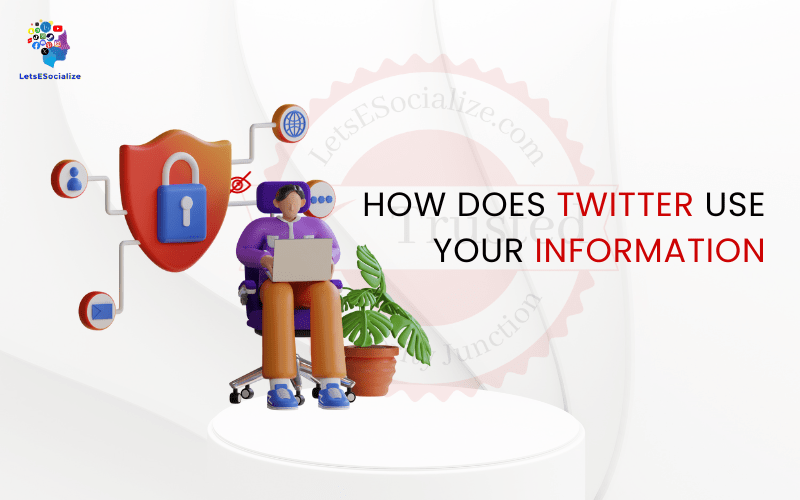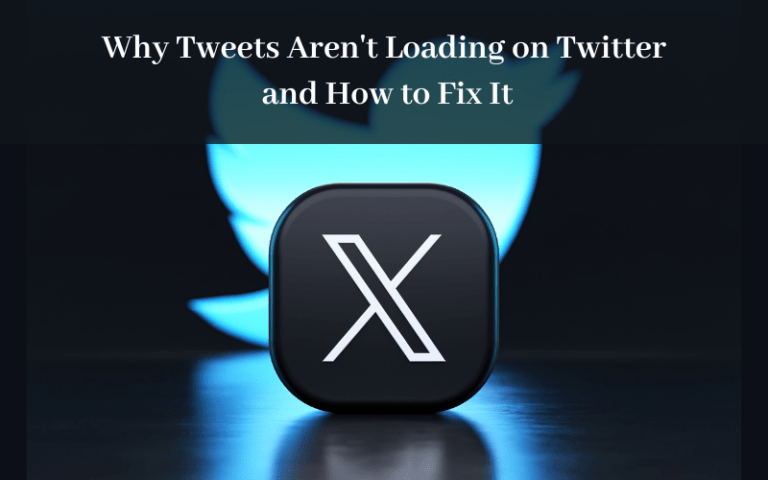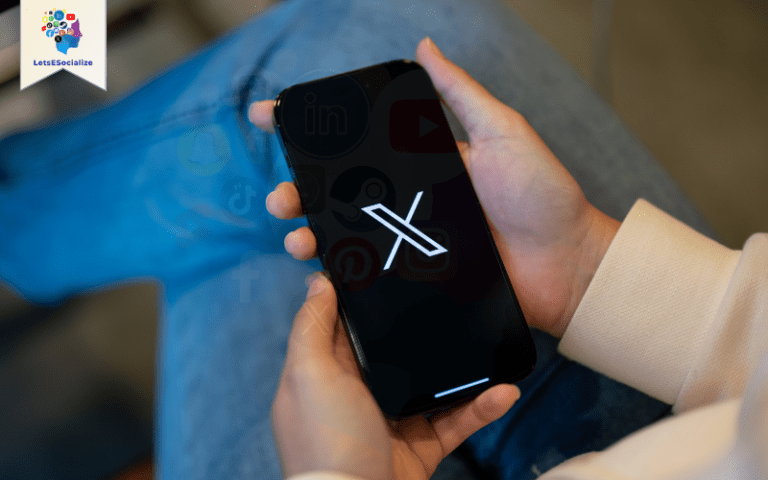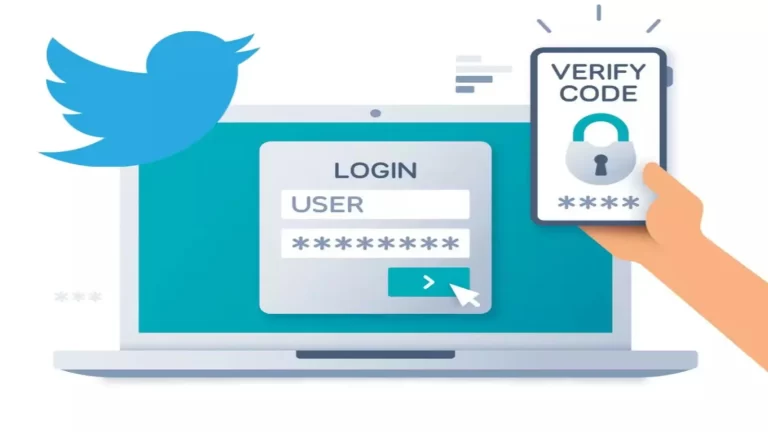Twitter collects vast amounts of data about its users. But how does it actually leverage this information behind the scenes to power its platform, products, and business model?
In this comprehensive overview, we analyze how does Twitter Use Your Information.
Table of Contents
Overview of How Twitter Uses User Data
According to its privacy policy, Twitter uses the data it collects about users for the following core purposes:
- To provide, personalize, and improve its services
- To show you relevant content and ads
- To monitor and analyze usage and trends
- To protect the platform and users from bad actors
- To communicate with you directly when needed
- To share with business partners when advantageous
- To comply with legal obligations when required
The specifics behind how Twitter utilizes user data for these purposes give insights into what drives many of the platform’s features, algorithms, and business decisions. Let’s explore some examples.
Providing Core Services
Naturally, Twitter needs to collect and utilize user data to power its core service offerings:
Profiles
- Your profile info, like name, bio, and location, enables you to have an identity on Twitter.
Feeds
- Following particular accounts, populate your Home feed with their Tweets.
Search
- Indexing every Tweet and account info enables search results.
Trends
- Identifying popular topics and hashtags in Tweets allows for discovering Trends.
Notifications
- Tracking your interactions pushes real-time notifications.
Direct Messages
- Maintaining connections lets users DM each other.
By collecting and continuously analyzing user data, Twitter could function at its most basic level. Next, let’s see how it powers more advanced features.
Also read: How Twitter Uses Our Cookie Policy
Personalizing Services
Leveraging user data is key for features that aim to provide personalized and relevant experiences like:
Tailored Suggestions
- Who you follow, your location, interests, and behaviors inform accounts, topics, and events Twitter recommends to you.
Curated News
- Machine learning determines news stories you may care about based on your interests and followers.
Custom Timelines
- Algorithms analyze your activity patterns to highlight the most relevant Tweets at the top of your feed.
Targeted Ads
- Marketing targeted to your inferred demographics and interest allows showing relevant ads.
Lookalike Audiences
- Advertisers can reach new users who share qualities with their existing customer base.
By harnessing user data, Twitter could personalize services and effectively connect people with relevant content.
Improving Services
Analyzing how people use Twitter is key for continuously improving the platform such as by:
Optimizing Features
- Usage statistics help Twitter identify popular features to expand and little-used ones to remove.
Enhancing Apps
- App performance data aids in improving stability and addressing issues with mobile clients.
Guiding Development
- Feedback and activity metrics steer decisions on new features and redesigns to build.
Informing Strategy
- Aggregated user analytics guide plans for growing platform adoption and engagement.
Supporting Innovation
- Usage trends uncovered in data propel imagination for ways to enhance the user experience.
Evaluating Experiments
- Testing different versions of features against metrics gleaned from data determines which performs best.
User information powers the constant fine-tuning required to keep evolving Twitter as a product.
Monitoring Usage Patterns
In addition to improving existing services, Twitter analyzes user data to identify broader trends and developments happening on and off the platform, such as:
Evaluating reach and influence
- How many people see certain Tweets and engage with certain accounts based on followers, retweets, and more?
Understanding user segments
- Using interests, demographics, and behaviors to categorize Twitter’s audience for market research.
Tracking cultural trends
- Identifying real-world events, news topics, and phenomena gaining traction based on sudden spikes in tweet volume and hashtags.
Monitoring the adoption of features
- Seeing how new products spread through analyzing usage growth across regions.
Identifying issues
- Detecting problems by analyzing spikes in errors or changes in usage patterns.
Monitoring Tweets, follows, trends, and myriad activities in aggregate equips Twitter to be plugged into the pulse of what’s happening with its users and the world.
Securing the Platform
Twitter leverages user data to protect the platform and community from bad actors through actions like:
Fighting spam
- Usage patterns help identify bot accounts spreading spam content.
Detecting manipulation
- Inauthentic engagement patterns can reveal coordinated influence campaigns.
Enforcing policies
- Analyzing Tweets, followers, and behaviours flags those violating rules.
Preventing abuse
- Blocking patterns, reports of harassment and abuse curb illicit activity.
Limiting disinformation
- Fact-checking Trends and analyzing linked content aids in halting false claims.
Without scrutinizing how people use the platform, Twitter could not effectively moderate harmful actions that undermine the integrity of its ecosystem.
Direct User Communication
Twitter may directly communicate with you based on data about your usage in order to:
Provide customer support
- Assist you with issues filing support tickets.
Share platform updates
- Notify you of new features released soon.
Verify account ownership
- Confirm identity to regain access to a lost account.
Send legal notices
- Inform you if unauthorized content is posted from your account.
Issue warnings
- Alert you if your account activity violates Twitter’s policies.
Direct communication based on monitoring account details and behaviors helps Twitter maintain a safe, compliant, and well-informed user base.
Sharing Data with Partners
Twitter may share certain user data with partners according to its privacy policy in order to:
Improve ad targeting
- Partners receive aggregated user insights to align targeting strategies.
Enable wider marketing
- Businesses can reach Twitter audiences by partnering with Twitter’s ad network.
Integrate Twitter features
- Partners can embed Twitter content and plugins across sites.
Conduct joint research
- Shared data aids joint analysis of usage patterns and trends.
Develop new offerings
- Partners can build products integrated with Twitter’s ecosystem.
Appropriately sharing data with partners can help Twitter scale its platform and business. But it does also expand the number of parties gaining access to user information.
Complying with Legal Obligations
Twitter may provide user data to comply with various laws and regulations:
Responding to lawsuits
- Providing account records relevant to legal proceedings.
Addressing copyright issues
- Removing infringing content per DMCA takedown requests.
Aiding government investigations
- Sharing account data with authorities per legal warrants.
Enforcing regulations
- Blocking prohibited content to align with regional speech laws.
While aiming to protect user interests, Twitter must abide by applicable laws which can involve disclosing user information under certain circumstances.
Key Takeaways on How Twitter Uses Data
In summary, Twitter leverages the trove of data it collects on users in the following critical ways:
- To technically provide its basic services and features.
- To personalize experiences through tailored recommendations and ranking.
- To optimize products and inform strategy by analyzing usage metrics.
- To secure the platform by identifying policy violations.
- To directly communicate with users about issues.
- To integrate with business partners, which expands data access.
- To adhere to legal obligations like copyright enforcement.
Understanding these use cases provides perspectives into why Twitter gathers such expansive data in the first place – much of it fuels the platform’s core functionalities.
Perspectives on Twitter’s Data Usage Practices
Opinions diverge on whether Twitter’s application of user data represents responsible practices or overreach. Some differing viewpoints include:
Supportive of the practices
- The uses clearly aim to improve services, user experience, and platform integrity.
- Twitter is transparent in explaining the rationale behind data practices.
- Many users are comfortable with trading some privacy for personalized features.
Somewhat sceptical
- The practices seem logically justified but murky in actual implementation.
- Parts could be exploited to increase ad revenues without proportional user benefit.
- More visibility into how algorithms utilize the data would be preferable.
Very concerned about the misuse
- Too much personal data is leveraged for questionable recommendations and invasive ads.
- It is suspicious that Twitter prioritizes profit over principles in data usage.
- Worry behavior tracking and monitoring could be abused or hacked.
There are reasonable debates from all perspectives on the appropriate boundaries for how Twitter applies its troves of collected user information.
Oversight of Twitter’s Data Practices
While Twitter aims to use data responsibly, oversight mechanisms like the following help hold them accountable:
Audits – Independent privacy and security audits assess their internal data policies and controls.
Reports – Transparency reports detail government/legal requests for user data.
Notices – Twitter informs users about changes to data practices through notices.
Settings – Users can adjust preferences to limit ad targeting and data sharing.
Feedback – Users, press, and advocacy groups actively scrutinize and pressure Twitter’s data practices.
Regulations – Laws like GDPR govern the use of private data and user rights.
Maintaining checks on power through oversight, accountability, and governance is key to ensuring the ethical application of user data at scale.
Optimizing Your Privacy on Twitter
If you have concerns about how Twitter leverages your information, here are tips for managing your settings:
- Review and limit ad personalization based on your comfort level.
- Disable location tracking and tweet geotagging if desired.
- Make your account private so your activity is not public by default.
- Be selective in who you follow and share data with.
- Avoid connecting your contacts or other accounts to Twitter.
- Use anonymous accounts unassociated with your identity for increased privacy.
- Delete old tweets and accounts to stop indefinite data retention.
- Employ good password hygiene and enable two-factor authentication.
- Avoid clicking sketchy links that could compromise your account.
- Periodically download your Twitter archive to review the data stored about you.
While Twitter aims to be transparent about its data usage, you can take proactive steps to control your privacy better.
The Future of Twitter’s Data Practices
As Twitter grows its platform, user base, and revenue streams, its application of user data will likely continue evolving as well. Potential developments include:
- Even more sophisticated analytics to model interests and behaviors as algorithms advance.
- Expanding usage of data for improving health and well-being based on emerging research.
- Tighter targeting is based on real-world offline data linkage via partnerships.
- Stronger stances on not cooperating with government requests that violate civil liberties.
- More extensive auditing and oversight from internal/external watchdog groups.
- Techniques like anonymization, encryption, and ephemeral content to enhance privacy options.
- Features letting users restrict usage of their data, like limiting training of AI models.
- Decentralizing data management and analysis for greater user control.
By continuing to innovate responsibly while providing user transparency and choice, Twitter can potentially maintain productive data practices that advance positive outcomes for all stakeholders.
Conclusion
In summary, Twitter leverages its vast collection of user data in a variety of ways, powering functionality, personalization, analytics, and business models. However, reasonable concerns exist around responsible data stewardship and avoiding overreach.
Twitter using user information strictly to improve core services differs greatly from exploiting it excessively for profit or surveillance. Ongoing oversight and governance balanced with user control can help keep data practices ethical.
Transparency enables informed debate. While Twitter is reasonably clear about its rationales for utilizing user data, it can do even better engaging critics and considering alternatives. But in any case, understanding exactly how Twitter puts your information to use facilitates making mindful decisions about your personal privacy boundaries.
What are your thoughts on how Twitter uses the data it collects about you? Do you find its usage justified or invasive? What oversight measures or controls could Twitter implement to address privacy concerns? Share your perspectives in the comments below!







